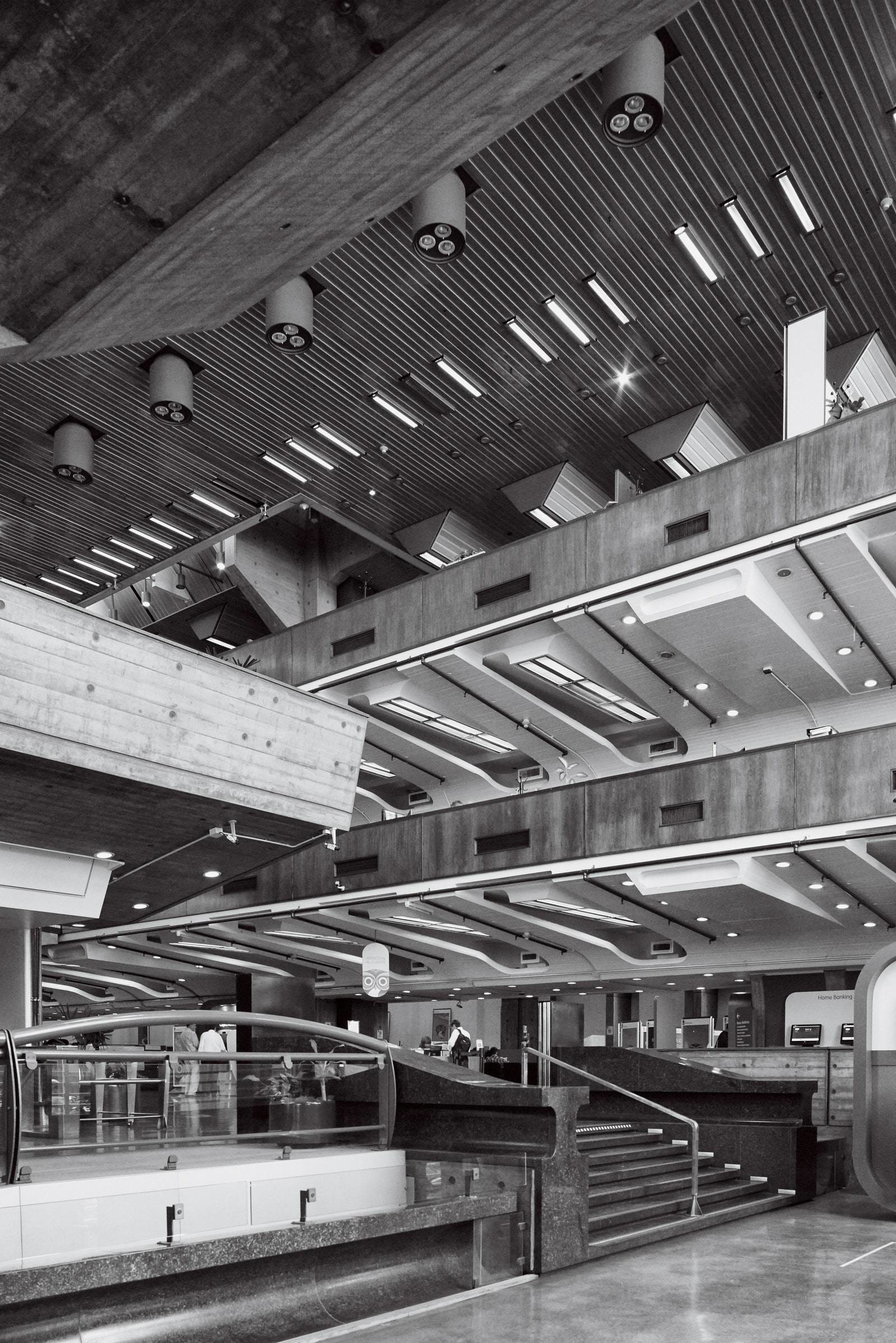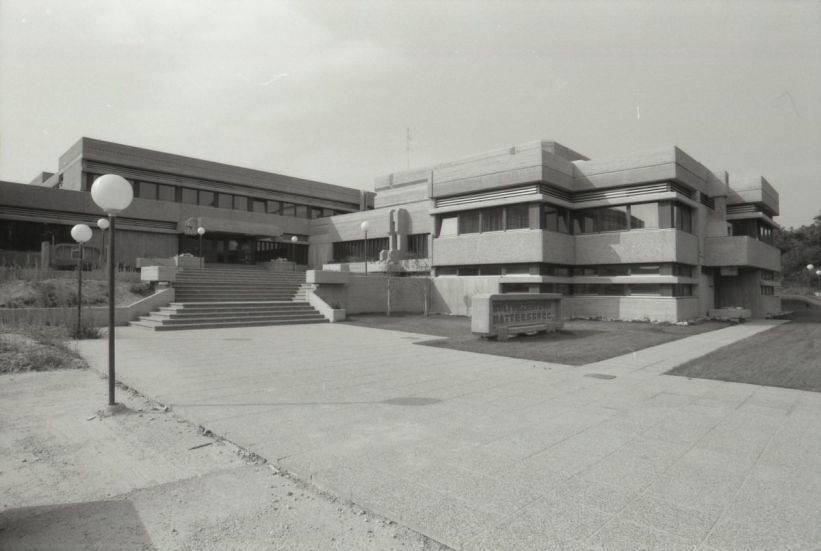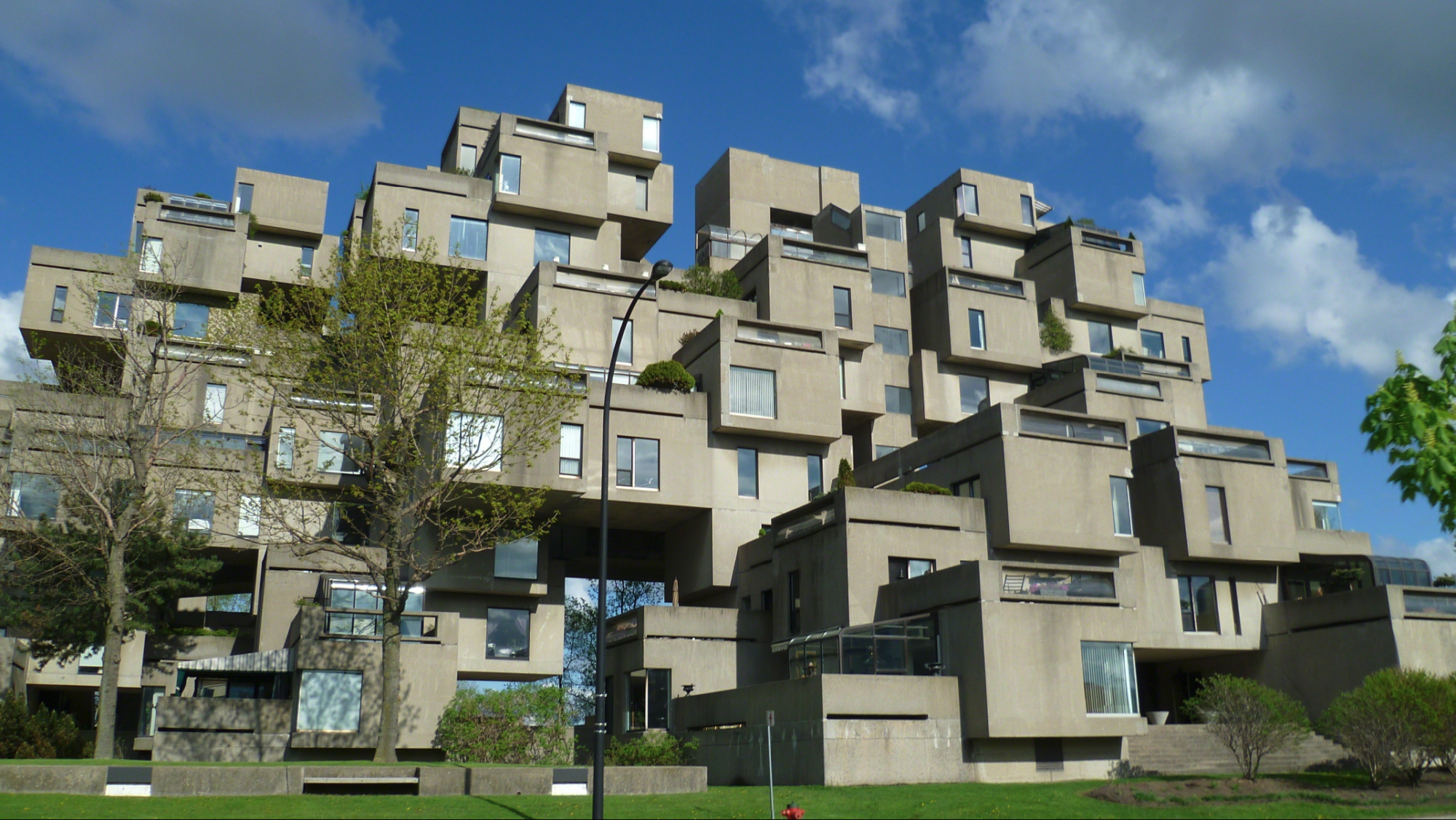主模式和野蛮模式
Taking a dig at Jakob Nielsen’s po-faced disapproval of Flash, Joel Spolsky wrote a post that has been echoing around the internet for the last 20 years. It’s short and funny, so I’ll quote it all here:
Joel Spolsky深入研究了Jakob Nielsen对Flash的不赞成,他撰写了一篇帖子 ,该帖子在过去20年间一直在互联网上回荡。 它又短又有趣,所以我在这里引用它们:
Jakob Nielsen says that Flash is ‘99% bad.’ I have to agree. Flash always reduces usability.
雅各布·尼尔森(Jakob Nielsen)说,Flash的“不良率是99%”。 我必须同意。 Flash总是会降低可用性。
On the other hand, every time I read Jakob Nielsen, I get this feeling that he really doesn’t appreciate that usability is not the most important thing on earth. Sure, usability is important (I wrote a whole book about it). But it is simply not everyone’s number one priority, nor should it be. You get the feeling that if Mr Nielsen designed a singles bar, it would be well lit, clean, with giant menus printed in Arial 14 point, and you’d never have to wait to get a drink. But nobody would go there, they would all be at Coyote Ugly Saloon pouring beer on each other.
另一方面,每次阅读Jakob Nielsen时,我都会感觉到他真的不欣赏可用性不是地球上最重要的事情。 当然,可用性很重要(我为此写了一本书)。 但这根本不是每个人的头等大事,也不应该。 您会感觉到,如果尼尔森先生设计了一个单人酒吧,那么酒吧将光线充足,干净整洁,并在Arial 14点上印有丰富的菜单,您将永远不必等待喝一杯。 但是没有人会去那里,他们都会在土狼丑陋的轿车上互相倾倒啤酒。
Spolsky’s post reads differently today than it did in 2000, a few years before web accessibility regulations were legislated into federal law. Usability now has to be everyone’s priority. WCAG standards are our rules of the road, preventing needless ambiguity, error, and exclusion. Yet the standardization of web patterns and general obsession with optimization have prompted calls for a return to the “weird web” (calls which notably reminisce about Flash development in the early aughts). We got too serious, too mainstream, as the web grew.
Spolsky的帖子今天的阅读方式与2000年的阅读方式有所不同,在2000年,网络可访问性法规被立法成为联邦法律之前的几年。 可用性现在必须成为每个人的首要任务。 WCAG标准是我们的工作之道,可避免不必要的歧义,错误和排斥。 然而,Web模式的标准化和对优化的普遍痴迷促使人们呼吁回到“怪异的Web” (这种调用在早期引起了人们对Flash开发的特别回忆)。 随着网络的发展,我们变得太认真,太主流了。
The web is fundamental to modern life, but modern life is also weird and bizarre and our commitment to usability needn’t hinder the expression of that strangeness. Thankfully, you can spend Bill Gates’ money using just keyboard navigation. There’s more strange out there.
网络是现代生活的基础,但是现代生活也很奇怪和离奇,我们对可用性的承诺无须阻碍这种陌生的表达。 值得庆幸的是,您可以仅使用键盘导航来花费比尔·盖茨的钱 。 那里还有更多奇怪的地方。
We see a little of this weirdness in the sites cataloged on Brutalist Websites. Web Brutalism has become a catchall term for websites that flout the conventions of modern web design with a kind of droll, utilitarian nostalgia for the early web. Think JNCO jeans in a sea of khaki Wordpress chino sameness. Things animate that shouldn’t, things don’t animate that should, things animate in ways that they shouldn’t. Navigation elements are either in your face or purposefully obscured. 3D art, italics, plain, neo grotesk fonts, monstrous hover states, jewel tones, thick dividing lines, harsh contrasts are some of the hallmarks. The trend is decidedly hip, and popular enough to show up in The New York Times articles and Bloomberg design conference sites. You know it when you see it.
我们看到这种古怪编目中的网站上有点野兽派网站 。 Web野蛮主义已成为对网站的通俗称呼,这些网站对早期Web表现出一种愚蠢的,功利的怀旧之情,不符合现代Web设计的惯例。 想想卡其色的Wordpress千篇一律的海洋中的JNCO牛仔裤。 事物本不应该进行动画处理,事物不应该本应进行动画处理,事物以本不应该进行的方式进行动画处理。 导航元素要么在您的脸上,要么故意被遮盖。 3D艺术,斜体,普通,新格罗特斯克字体,悬停状态令人恐惧,珠宝色调,粗分界线,鲜明的对比是其中的标志。 这种趋势绝对是时髦的,并且足够流行,可以在《纽约时报》的文章和彭博设计会议网站上显示。 您一看到就知道。

There’s some debate about what constitutes Web Brutalism. In “ The Split Personality of Web Brutalism,” Frederick O’Brien quotes Pascal Deville, curator of the Brutalist Websites archive, on the different types of practitioners:
关于什么构成网络野蛮主义存在一些争论 。 弗雷德里克·奥布莱恩(Frederick O'Brien)在“ 网络野蛮主义的分裂人格 ”一文中引用了野蛮主义网站档案馆馆长Pascal Deville的不同类型从业者:
The purists reference strongly to the architectural characteristics of Web Brutalism, such as the concept of ‘truth to materials’ and the use of the purest markup elements available. The UX minimalists, in contrast, see efficiency and performance as the main driver of Web Brutalism and even believe that the radical limitation of possibilities can boost conversions. The ‘anti-ists’ or artists see web design as an (still) undervalued form of art and don’t show much respect [to] the status quo and mostly get bad press.
纯粹主义者强烈引用了Web野蛮主义的体系结构特征,例如“对材料的真实性”概念以及使用最纯净的标记元素。 相比之下,UX极简主义者将效率和性能视为Web野蛮主义的主要驱动力,甚至认为,可能性的根本限制可以促进转换。 “反主义者”或艺术家将网页设计视为一种(仍然)被低估的艺术形式,对现状没有太多的尊重,并且大多受到负面的报道。
Most of what’s labeled Web Brutalism is a normcore visual aesthetic — the web version of anti-art, a rejection of refinement and sophistication — rather than a meaningful digital analogue to architectural Brutalism. Coined by Swedish architect Hans Asplund, “Brutalism” described a style of architecture that intentionally revealed the underlying structural materials, derived from the French béton brut, “raw concrete”. Though it has since been associated with monolithic, domineering concrete government buildings aptly described as brutal, Brutalism is in fact an ethos of truth to materials, emerging from postwar ideals of transparency, economy, and stability.
所谓的网络残酷主义大多数是规范性的视觉美学 -反艺术的网络版本,对精致和复杂性的拒绝-而不是建筑残酷主义的有意义的数字类似物。 由瑞典建筑师汉斯·阿斯普伦德(Hans Asplund)创造的“野蛮主义”描述了一种建筑风格,有意揭示了源自法国bétonbrut (原始混凝土)的基础结构材料。 尽管野蛮主义自那时以来就与恰当地描述为野蛮的独具一格的,统治性的混凝土政府建筑物有关,但野蛮主义实际上是从战后的透明性,经济性和稳定性理想中衍生出来的一种对物质的真理精神。



People have recently come to the defense of these maligned buildings as they fall into disrepair and become targets for demolition. Brutalist buildings weren’t primarily avant-garde artistic statements — although some are remarkably forward-thinking and provocative — nor were they designed to intimidate inhabitants with monolithic walls and cantilevers. Rather, the style was an attempt to create architecture that honestly reflected purpose and form. Architecture critic Reyner Banham wrote in 1955 that Brutalist buildings exhibit three qualities:
由于这些残破不堪的建筑物成为拆除的目标,人们最近为这些建筑物辩护 。 野兽派的建筑并不是主要的前卫艺术作品,尽管其中一些具有明显的前瞻性和挑衅性,但它们的设计目的也不在于用整体墙和悬臂来恐吓居民。 相反,这种风格是试图创建能够真实反映目的和形式的建筑。 建筑评论家雷纳·班纳姆(Reyner Banham )在1955年写道 ,野兽派建筑表现出三种品质:
- formal legibility of plan, 计划的正式可读性
- clear exhibition of structure, and 清晰的结构展示,以及
- valuation of materials for their inherent qualities ‘as found.’ 对材料的固有质量进行“评估”。
Banham formed his definition in part by reflecting on the work of British architects Alison and Peter Smithson whose mid-century buildings anticipated the early phases of Brutalism. Writing about a Soho project in 1953, the Smithsons described what would come to be called “the warehouse aesthetic:” “It is our intention in this building to have the structure exposed entirely, without interior finishes wherever practicable. The contractor should aim at a high standard of basic construction, as in a small warehouse. “
Banham通过反思英国建筑师Alison和Peter Smithson的作品来形成他的定义,他们的世纪中叶建筑预见了野蛮主义的早期阶段。 史密森夫妇(Smithsons)在1953年撰写有关Soho项目的文章时,描述了后来被称为“仓库美学”的概念:“我们打算在此建筑物中将结构完全暴露,在可行的情况下不进行内部装饰。 承包商应针对高标准的基础建设,例如在小型仓库中。 “
Brutalist buildings are notable for their use of unadorned materials — “raw” concrete and wood. Yet at the core of the Brutalist ethos is a tension between two philosophies that have been the topic of a long-standing debate in information design: the merits of “seamless” and “seamful” design, “seams” in this context taken to mean revelations of an object’s inner workings.
野兽派建筑以使用未经修饰的材料(“原始”混凝土和木材)而著称。 但是,野兽派精神的核心是两种哲学之间的张力,这一直是信息设计领域长期争论的主题:“无缝”和“无缝”设计的优点,在这种情况下的“接缝”是指物体内部运作的启示。
It is our intention in this building to have the structure exposed entirely, without interior finishes wherever practicable. The contractor should aim at a high standard of basic construction, as in a small warehouse.
我们打算在此建筑物中将结构完全暴露,在可行的情况下不进行室内装饰。 承包商应像在小型仓库中一样,以高标准的基础建设为目标。
The debate asks the question, To what extent should an object reveal its structure and operation to the user? Seamless proponents argue that tools should be invisible, disappearing into the task at hand. Mark Weiser, writing about Ubiquitous Computing in 1991, summarizes seamlessness well: “By invisible, I mean that the tool does not intrude on your consciousness; you focus on the task, not the tool.” Designers typically take seamlessness as the de facto standard for our work, emphasizing clarity, consistency, simplicity, efficiency, reducing cognitive load. We seek to minimize distractions.
辩论提出了一个问题:物体应在多大程度上向用户展示其结构和操作? 无缝的支持者认为工具应该是不可见的,消失在眼前的任务中。 马克·韦瑟(Mark Weiser)于1991年撰写了有关“泛在计算”的文章,很好地总结了无缝性:“不可见,我的意思是该工具不会侵入您的意识; 您专注于任务,而不是工具。” 设计师通常将无缝性作为我们工作的事实上的标准,强调清晰度,一致性,简单性,效率和减轻认知负担。 我们力求减少干扰。
Yet what if we can achieve a clearer understanding by intentionally revealing how a system works? Proponents of seamfulness argue that revealing an object’s complexity and operation can aid usability. Chalmers and Galani point out that seamful design allows users to “to selectively focus on or reveal [seams] when the task is to understand or even change the infrastructure.” Interactive explorable explanations are some of the best examples of information design that facilitate understanding. They don’t banish complexity, but rather progressively-disclose it to the user as they reveal the system. The concept of meta-moments is another example of seamful design, in which moments of reflection are prompted by thoughtful use of friction in UI design.
但是,如果我们可以通过有意揭示系统的工作原理来获得更清晰的了解,该怎么办? 支持者认为,揭示对象的复杂性和操作性可以帮助提高可用性。 Chalmers和Galani 指出 ,无缝设计允许用户“在任务是了解甚至改变基础架构时有选择地关注或揭示[接缝]。” 交互式可探究性解释是有助于理解的信息设计的一些最佳示例。 它们不会消除复杂性,而是在揭示系统时逐步将其公开给用户。 元时刻的概念是无缝设计的另一个示例,其中思考的时刻是通过在UI设计中谨慎使用摩擦而引起的。
Seamlessness emphasizes concealment; seamfulness emphasizes transparency. In architecture, Brutalism’s ethos of transparency was partly a response to the buttoned-up modernist International Style. And on the web, Brutalist websites can be seen as a response to the polished visual style of Material Design and Apple’s Human Interface guidelines.
无缝性强调隐蔽性; 无缝性强调透明度。 在建筑方面,野兽派的透明性在一定程度上是对固定的现代主义国际风格的回应。 在网络上,野兽派网站可以看作是对Material Design设计的优美视觉风格和Apple人机界面指南的回应。

The anti-art aesthetic has become the face of Web Brutalism because it’s fun and edgy and all the cool kids are doing it. Yet Deville’s purists, minimalists, and anti-ists are all asking, in their own way, what it means to make something on the web that is true to the web. Where is authenticity to be found? In adherence to traditional web markup, or in elegant minimalism, or maybe in the goofy spontaneity of the early web? Are David Copeland’s principles a truer representation of “fidelity to materials” of the web than Google’s Material philosophy? What is the true material of the web? Is it markup, or is it microchips and physical telecommunication networks? Or is it motion, like Frank Chimero argues in “ What Screens Want?” When the Smithsons placed the water heater for the Hunstanton Secondary School prominently above the school’s roofline, they weren’t just revealing the building’s infrastructure, they were reveling in it. What does it look like to do this on the web?
反艺术美学已成为Web野蛮主义的代名词,因为它既有趣又前卫,并且所有酷酷的孩子都在这样做。 然而,Deville的纯粹主义者,极简主义者和反主义者都以自己的方式问,在网络上制作对网络真实的东西意味着什么。 在哪里可以找到真实性? 是遵循传统的Web标记,还是优雅的极简主义,或者是早期Web愚蠢的自发性? 大卫·科普兰(David Copeland)的原则是否比Google的“ 材料”哲学更真实地表示“材料的逼真度”? 网络的真正内容是什么? 是标记,还是微芯片和物理电信网络? 还是动议 ,就像弗兰克·希梅罗(Frank Chimero)在“ 什么屏幕想要什么?”中所说的那样。 当史密森一家将汉斯坦顿中学的热水器放在学校屋顶上方的显眼位置时,他们不仅在揭示建筑物的基础设施,还陶醉其中。 在网络上执行此操作看起来像什么?

Of course there’s no single answer, because the web is simultaneously a physical and digital medium. It is material and it isn’t. It depends on how literally you interpret the question. But taking it somewhere in-between, seeing the web as primarily an information medium, we can ask the question a little differently: what does it look like to design something that is true to the material of digital information?
当然,没有唯一的答案,因为网络同时是物理和数字媒体。 它是物质,不是物质。 这取决于您对问题的理解。 但是,将其作为中间的一种方式,将网络视为主要的信息媒介,我们可以提出一些不同的问题:设计出符合数字信息内容的东西看起来像什么?
I’ve been thinking about this as I spend more time using Notion, an application designed for organizing and sharing information. At first glance, it doesn’t seem all that different from the Evernotes and Google Keeps of the world. It allows you to create pages which include calendars, to do lists, image galleries, tables, and the like. What makes it different than other note-taking tools is its flexibility: a page can contain just a calendar, or it can contain text, images, video embeds, all of which are treated as defined, linkable content blocks.
我一直在考虑这个问题,因为我花了更多时间使用Notion (一种用于组织和共享信息的应用程序)。 乍一看,它与世界上的Evernotes和Google Keeps似乎并没有什么不同。 它允许您创建包含日历,任务列表,图像画廊,表格等的页面。 它与其他笔记记录工具的不同之处在于它的灵活性:页面可以仅包含日历,也可以包含文本,图像,视频嵌入,所有这些都被视为已定义的可链接内容块。
Notion’s flexibility is too unrestricted and ambiguous for some. The app doesn’t prescribe an organizing structure to information, allowing you to nest and combine pages and content in whatever way makes sense for you and your work. Yet it has very clear structures for the types of content blocks that can be created: something is either a video, or a heading, or quote, and is styled and formatted accordingly.
对于某些人来说,概念的灵活性过于宽松和模棱两可。 该应用程序没有规定信息的组织结构,允许您以对您和您的工作有意义的任何方式嵌套和组合页面和内容。 但是,对于可以创建的内容块的类型,它具有非常清晰的结构:某些东西可以是视频,也可以是标题或引号,并相应地设置样式和格式。
This, I think, is the brilliance of Notion, and what makes it one of the best examples of “fidelity to digital information” that I’ve come across. The structure of the app reflects the structure of the web itself: digital content is purposefully formatted, like semantic HTML elements, and exists in a hierarchical structure (directories on the web, nested pages in Notion), yet can be linked and referenced to create a complex network of information. And pages in Notion reveal the structure of the information: when nesting a page within a page, the child page always displays on the parent page. There’s no way to create a child page that doesn’t display on a parent page, no way to obscure the structure of the information. The semantic structure of Notion reflects the semantic structure of the web itself.
我认为,这就是概念的光辉,这使其成为我遇到的“忠实于数字信息”的最好例子之一。 该应用程序的结构反映了Web本身的结构:数字内容经过专门格式化,就像语义HTML元素一样,并以分层结构(Web上的目录,Notion中的嵌套页面)存在,但可以链接和引用以创建复杂的信息网络。 而Notion中的页面则揭示了信息的结构:在页面中嵌套页面时,子页面始终显示在父页面上。 无法创建不会显示在父页面上的子页面,也无法掩盖信息的结构。 概念的语义结构反映了Web本身的语义结构。

Which brings us back to seams, and Web Brutalism. By the looks of it, Notion isn’t an exemplar of the style. It’s a highly-polished consumer app, technically complex, and goes far beyond the strictures of vanilla HTML markup. Yet it thoughtfully balances the tension between seamfulness and seamlessness, revelation and disclosure at the heart of the Brutalist ethos. The app reflects ideas of information design that inspired the web itself, which makes sense given their admiration of early web pioneers like Doug Englebart.
这使我们回到了接缝和网络野蛮主义。 从外观上看,Notion并不是这种风格的典范。 这是一个经过高度抛光的消费者应用程序,技术复杂,并且远远超出了原始HTML标记的限制。 然而,它在野蛮主义精神的核心思想上平衡了无缝性与无缝性,启示和公开之间的张力。 该应用程序反映了信息设计的思想,这些思想启发了网络本身,这对早期Doug Englebart等早期网络先驱者的钦佩是有道理的。
The concept of seamfulness prompts designers to ask how an object can aid understanding and usage by showing its users what’s going on inside. How can we create what Mark Weiser, later revising his ideas of seamless design, calls “beautiful seams” — thoughtfully-crafted moments of revelation? Notion doesn’t show us how it’s literally working — the background processes constantly running to enable editing, collaboration, and the like. We don’t need to see our car’s engine to know it’s running. But it shows users how their understanding is working, how our ideas are structured, connected, and evolving. The app is reminiscent of Kedit, a program essayist John McPhee asked a friend to develop for him:
无缝性的概念促使设计者提出一个问题,即向对象展示用户内部的情况如何帮助理解和使用。 我们怎样才能创造出马克·韦瑟(Mark Weiser),后来修改他的无缝设计理念,将其称为“美丽的接缝”-精心设计的启示时刻? 概念并没有向我们展示它实际上是如何工作的-后台进程不断运行以启用编辑,协作等功能。 我们不需要看汽车的引擎就可以知道它在运行。 但是它向用户显示了他们的理解是如何工作的,我们的思想是如何构成,联系和发展的。 该应用让人想起Kedit,程序散文作者John McPhee 要求一个朋友为他开发:
Kedit did not paginate, italicize, approve of spelling, or screw around with headers, wysiwygs, thesauruses, dictionaries, footnotes, or Sanskrit fonts. Instead, [Howard J. Strauss, then-head of Princeton’s Office of Information Technology] wrote programs to run with Kedit in imitation of the way I had gone about things for two and a half decades…Howard thought the computer should be adapted to the individual and not the other way around. One size fits one. The programs he wrote for me were molded like clay to my requirements-an appealing approach to anything called an editor.
Kedit不会对页眉,斜体,批准拼写进行分页,也不使用标头,所见即所得,叙词表,字典,脚注或梵语字体拧紧。 相反,[普林斯顿大学信息技术办公室主任霍华德·斯特劳斯(Howard J. Strauss)编写了与Kedit一起运行的程序,以模仿我过去二十五年来的处事方式……霍华德认为计算机应该适合于个人,而不是相反。 一种尺寸适合一种。 他为我编写的程序完全符合我的要求,对任何称为“编辑器”的人来说都是有吸引力的方法。
Prior to using Kedit, McPhee would document notes on individual notecards, then arrange and rearrange them on his kitchen table or living room floor as he organized the structure of his essays. What he lost visually in using Kedit, no longer seeing groups of notecards on the floor, he gained in a searchable, flexible database of information that gave him an effective way to shape knowledge in idiosyncratic ways.
在使用Kedit之前,McPhee会将笔记记录在单个笔记卡上,然后在他整理论文结构时在厨房的桌子或客厅地板上进行整理和重新排列。 他在使用Kedit时在视觉上失去了什么,不再在地板上看到成组的记录卡,而是在一个可搜索的灵活信息数据库中获得了知识,这为他提供了一种以特有的方式塑造知识的有效方法。
This is the essence and opportunity of Web Brutalism: more than a utilitarian aesthetic, it’s a way of creating spaces for thought and expression on the web that reflect the nature of thought and the web. The best tools — digital or otherwise — give enough structure and flexibility for the task at hand. When that task is thinking, the best tools reflect the way that thinking happens, a meandering, back-and-forth process of exploring and refining our hunches and questions and notions.
这是网络野蛮主义的本质和机遇:它不仅仅是一种实用主义的美学,它还是一种在网络上创造思想和表达空间的方式,以反映思想和网络的本质。 最好的工具(无论是数字工具还是其他工具)都可以为当前任务提供足够的结构和灵活性。 当任务正在思考时,最好的工具会反映思考的方式,这是探索和完善我们的直觉,问题和观念的曲折,反复的过程。
Originally posted on viget.com
最初发布于 viget.com
翻译自: https://uxdesign.cc/web-brutalism-seamfulness-and-notion-8004b89751a2
主模式和野蛮模式





















 7871
7871











 被折叠的 条评论
为什么被折叠?
被折叠的 条评论
为什么被折叠?








